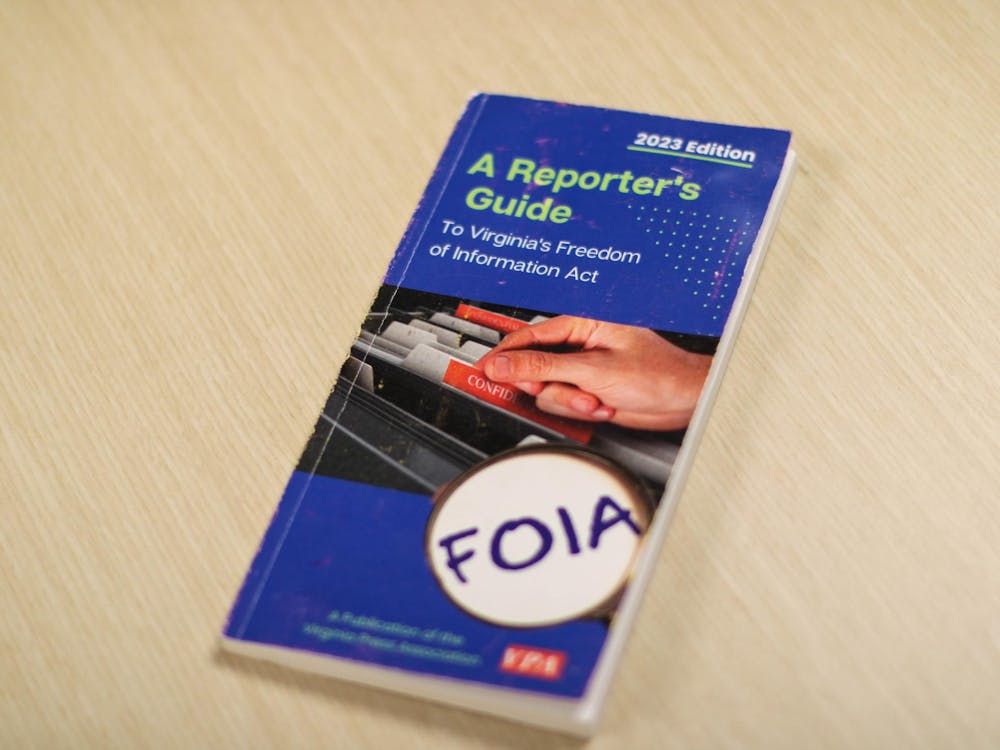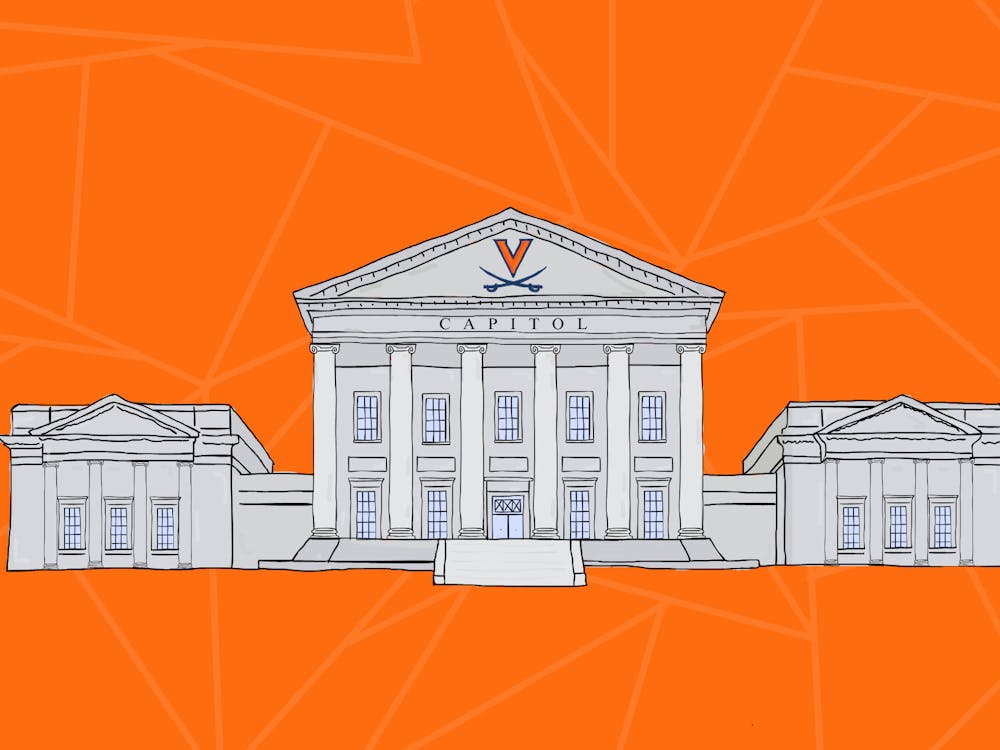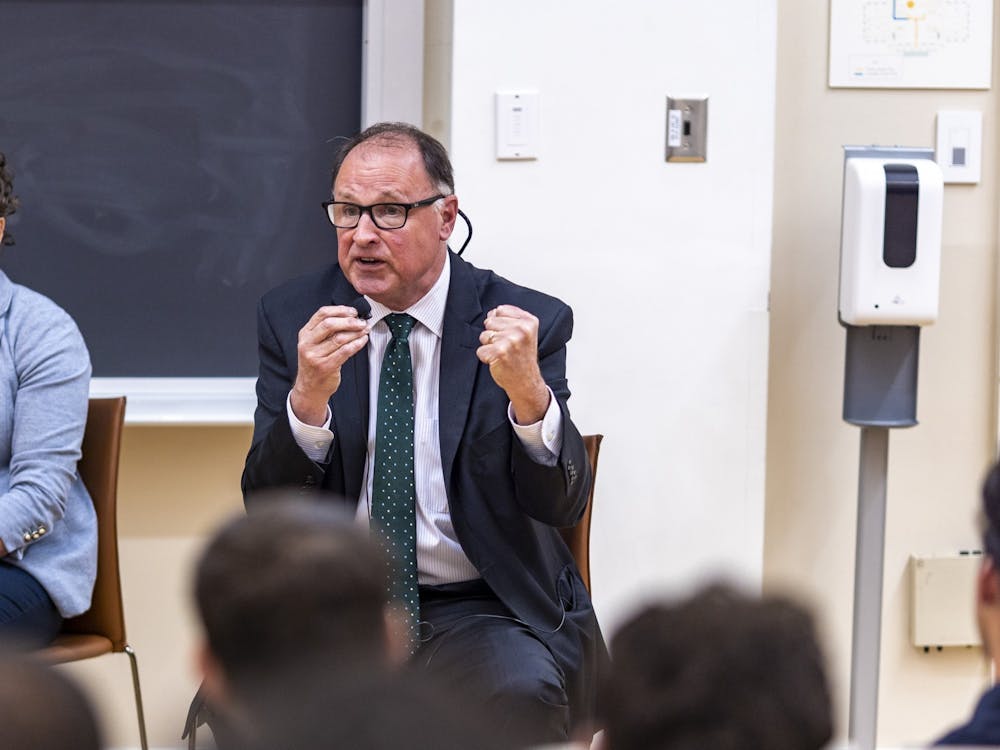Imagine if professors had a way to determine, with absolute certainty, if any of their students had cheated on papers, projects or exams. Would students still cheat?
Actually, a number of the University's professors already may have developed effective methods of rooting out cheaters.
"Finding [dishonest students] is important to be fair to students who do their work honestly," said Physics Prof. Louis A. Bloomfield, who wrote a computer program to analyze students' term papers.
Bloomfield teaches the "How Things Work" series for which he assigns one five-page paper worth 25 percent of the final grade.
"I became aware that some students were reusing papers from previous semesters," Bloomfield said. "Clearly, that doesn't seem very fair."
His new program searches the texts, which students submit online, and identifies cases of plagiarism or multiple submission. "The program itself is pretty simple - conceptually, it's the kind of thing I created in an afternoon," he said.
Bloomfield did not tell his students that he would check their term papers with the program.
"It doesn't surprise me that [the professor] is concerned about people cheating," said second-year College student Lindsey O'Connor, who is now a student in Bloomfield's class.
"The paper was actually really hard to write" because it required detailed research, O'Connor said. "But it doesn't bother me that he checks them because I didn't cheat."
Bloomfield has initiated honor charges against students in the past.
"There's no question these are guilty people," said Bloomfield of the students he has charged. "The evidence is pretty black and white. Most of the copying is word-for-word, huge expanses of text. It's pretty hard to think exactly the same way for 1,000 words."
First-year Engineering student Ruaridh Campbell said his Computer Science 101 professor, Tom Horton, also uses a program to make sure students do not cheat.
"I don't know exactly how it works, but basically it takes each [student's] program and searches for identical bits of code," Campbell said.
"Everybody has their own idiosyncrasies when they're programming" so any similarities are detectable, he said.
Horton said he uses a program called MOSS, created by a fellow at the University of California-Berkeley and now available on the Internet, to check for suspicious similarities between students' assignments.
"MOSS works by comparing programming structure, ignoring all the insignificant aspects that can vary," Horton said. He compared the method to examining "two students' essays by comparing sentence structure while ignoring the words themselves."
Horton, who taught at a state university in Florida for 13 years before coming here, just began teaching at the University this semester.
He said he has been struggling with student plagiarism in programming assignments for years and began using MOSS to combat the problem. "It's very clever ... It knows more about program structure than many programmers, and it's hard work to fool it," he added.
Horton also said that while visiting the University two years ago, he conducted an experiment on a CS 101 class using MOSS to "see [how] a large group of U.Va. students really behaved in the face of the honor system."
"The results were not good," Horton said. "Of about 350 assignments ... there were 37 students involved in what I considered blatant plagiarism."
Horton declined to comment on what he has observed among his current students, but he said the computer science department usually handles such violations outside the honor system.
"If those statistics are accurate, that is alarming," said Spanish Prof. David T. Gies, who formerly served as Faculty Senate chairman.
"But it might not indicate an intention to cheat," Gies said. "It might indicate a misunderstanding on the part of students" of professors' expectations and proper uses of information found on the Internet.
"The Honor Committee has always been aware that there are a number of cheaters that aren't being turned in," Honor Committee Chairman Thomas Hall said.
According a recent honor survey of students, about 6 percent of students admit to having cheated. This equals about 400 or 500 cases per year, of which the Committee usually hears between 60 and 100 cases per year, Hall said.
"But obviously, we're still doing something right with the honor system because the numbers of students cheating [at the University] are much lower than comparable institutions," he said.
Hall cited a study done by Donald McCabe of Rutgers University that found national rates of about 80 percent of college students who admitted to having cheated.
Bloomfield is now working with colleagues in the University-sponsored Teaching and Technology Initiative to generalize his program so other classes can use it.
"With the honor code, ideally, you shouldn't have to have a program" to check for cheating, Campbell said.
Students often ignore cheating because "it's so painful to turn people in," he said. "But I feel it's my duty as a member of the faculty to uphold honor."
"In the cases of academic fraud I've been involved with recently, the honor system seems to be doing a very good job," he added.
Horton said his use of MOSS does indicate a certain amount of mistrust of students. But he added, "Now that I've joined the [faculty], I feel more of a commitment to strengthening the community of trust by doing what I can to reduce the temptation [to cheat], by instilling values and also by identifying violations when I can"






